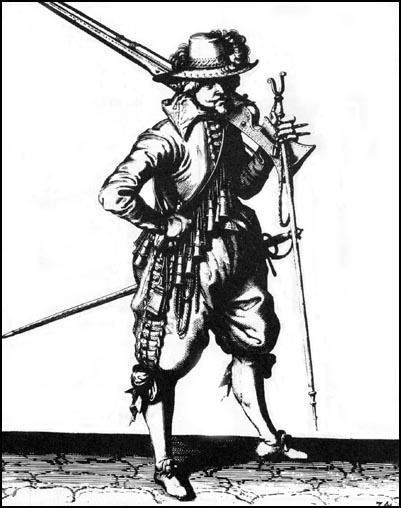Civil War: Weapons
The Royalist and Parliamentary armies used similar tactics and weapons during the Civil War. Before a battle began both sides would line up facing each other. In the centre would be the infantry brigades of musketeers and pikemen. On each side of the infantry were the cavalry. The right-wing would be led by the lieutenant-general, the left-wing by the commissary general.
The heavy artillery was stationed at the rear where it could fire over the heads of the infantry. Smaller cannons, that fired nails and scrap iron in canvas bags, were positioned in front of the infantry. Most soldiers were provided with armour that covered their breasts and backs. Armour was expensive and on many occasions some members of the infantry were forced to wear leather tunics instead. Although completely inadequate against gunfire, these tunics did provide some protection against swords.
The pikeman carried pikes that were between twelve and eighteen feet long. When the enemy employed a cavalry charge, the musketeers sheltered behind and between the pikemen. During the cavalry charge the pikemen aimed their pikes at the chests of the oncoming horses.

Musketeers carried a matchlock. Although the matchlock was not very accurate it could kill a man from three hundred yards. Because of the state of medical welfare at that time, any shot wound would probably result in the soldier dying. The main disadvantage of the matchlock was the time it took to reload after each shot. To solve this problem, musketeers in the front line fired their matchlocks and then they retired to the back to reload.
Another strategy involved the musketeers in the first line kneeling, the second line crouching and the third line standing. The three lines of musketeers all fired at the same time. After firing, these men went to the back and were replaced by the next three lines of musketeers.
The men in the cavalry also carried either a short-barrelled musket or a flint-locked carbine. The main strategy was to advance at a quick trot until in range of the enemy. The men in the front fired, then wheeled away. In their second charge they advanced at full gallop using either a short sword or cutlass.
